Testing of LSE checkerboard targets regarding their usability with the Leica RTC360
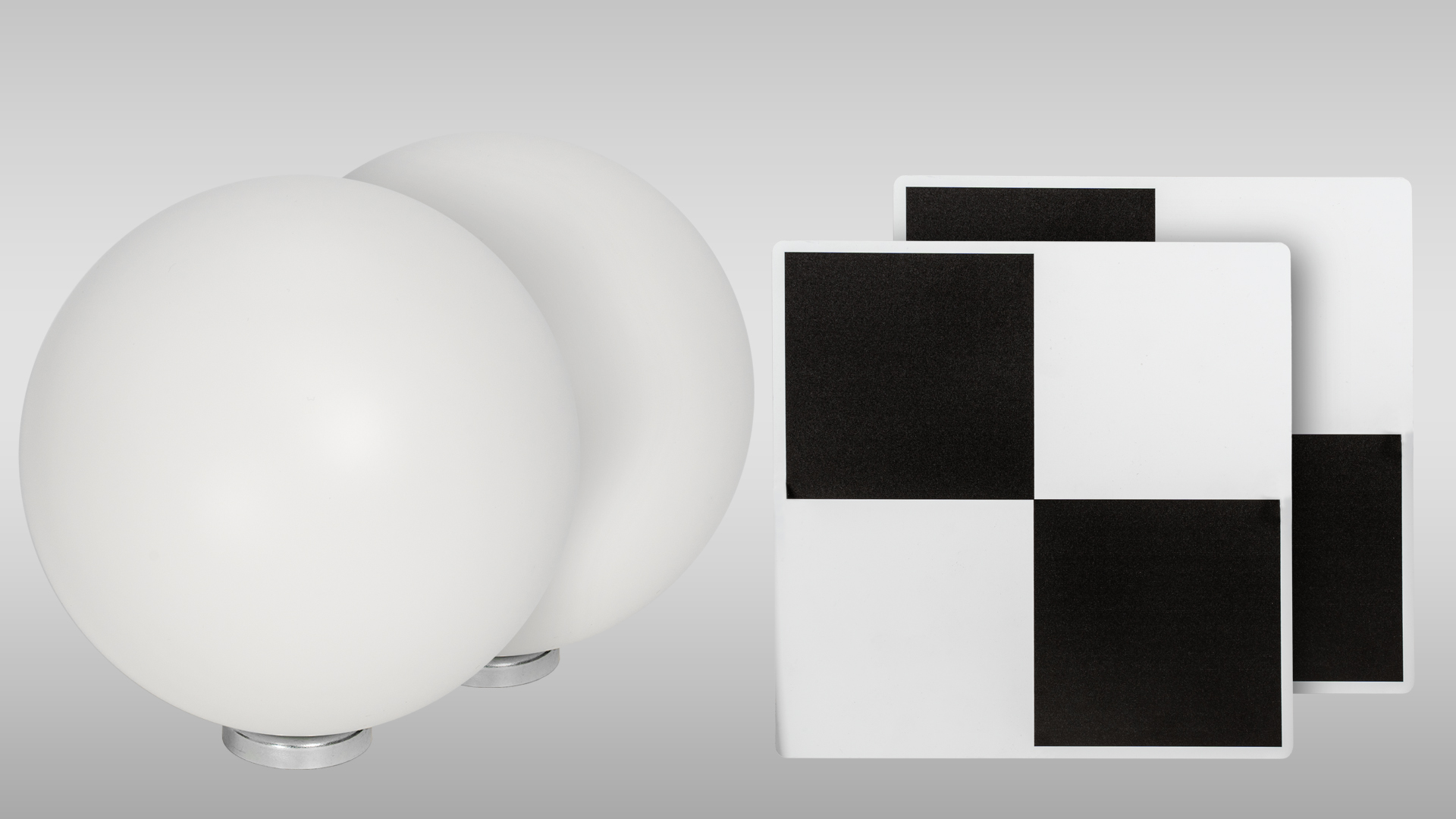
TitleLaserscanning Zielmarken im Test
Im Zuge der Überprüfung von LSE-Referenzkugeln hinsichtlich der Verwendbarkeit mit dem Leica RTC360 haben wir auch weitere Referenzmarken getestet. Dabei wurden die Schachbrettzielmarken, die in unserem Shop erhältlich sind, überprüft.
In the course of testing LSE reference spheres regarding their usability with the Leica RTC360, we also tested other reference marks. In the process, we tested the checkerboard targets available in our shop.
Test arrangement
The following targets were inspected in the test:
- Magnetic checkerboard target (20cm x 20cm & Ø 4,5")
- Small checkerboard target (20cm x 20cm & Ø 4,5" (4,5" with magnetic connection | 4,5" with adapter for Leica spigot))
- Statically charged EasyTarget (20.6cm x 20.6cm & Ø 4,5")
- Checkerboard sticker (removable) (15cm x 15cm & Ø 4,5")
- Checkerboard sticker (highly adhesive) (15cm x 15cm & Ø 4,5")

The reference marks were tested in the typical sizes in square format and also as a round target plate with the typical Leica diameter of 4.5". In order to evaluate the visibility, these targets were also tested in different alignments:
- Thus the targets were placed in different positions. On the one hand, the horizontal rotation was changed, making the laser's incident angle more acute.
- In addition, the targets were also rotated vertically by 45° to test this effect as well.
- Moreover, the behaviour at increasing distance was investigated. During the tests, the scanner positions were 10m, 15m, 20m and 25m away from the targets.
The selected scan resolution of the RTC360 is 3mm/10m, which is the highest possible resolution.
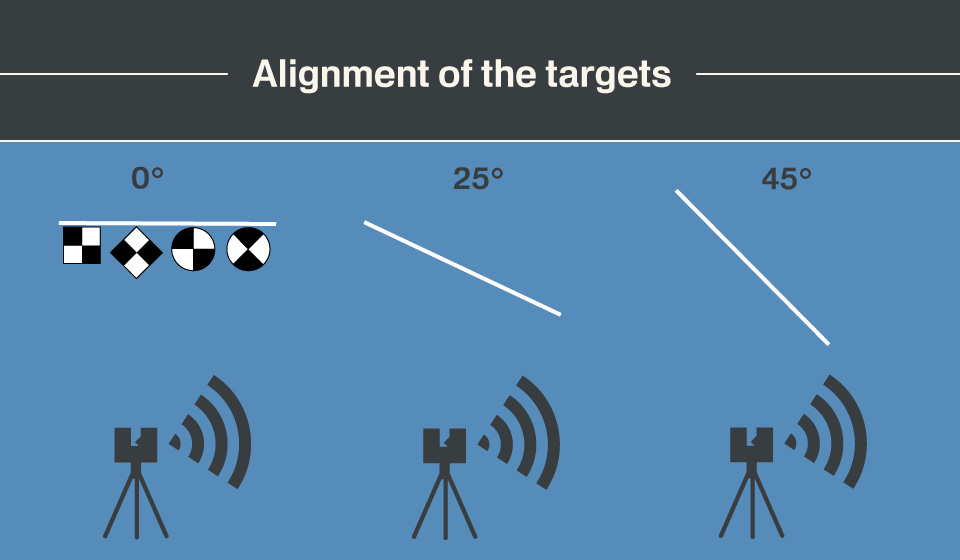
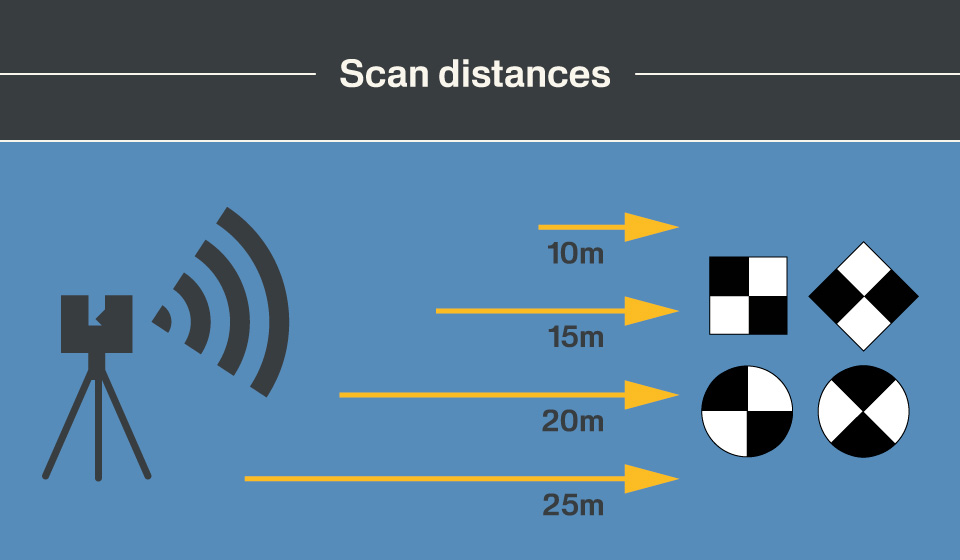
Analysis
The Leica software solutions Cyclone and Cyclone Register360 were used for analysis. The analysis was also carried out in the independent software PointCab. For this, however, the raw data first had to be imported into Cyclone in order to export it again in E57 format, so that the analysis could be performed there.
In the following, the results are shown in the figures. Colors symbolize the visibility in the different scenarios.
Processing software Register360
The following results were achieved in Leica Cyclone Register360:
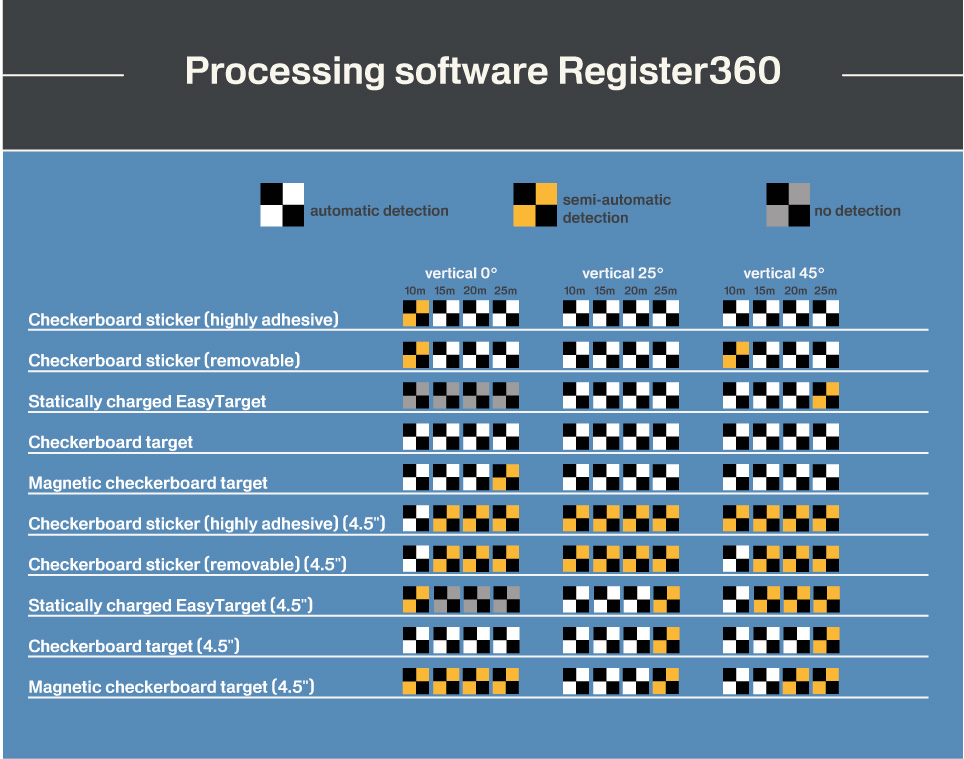
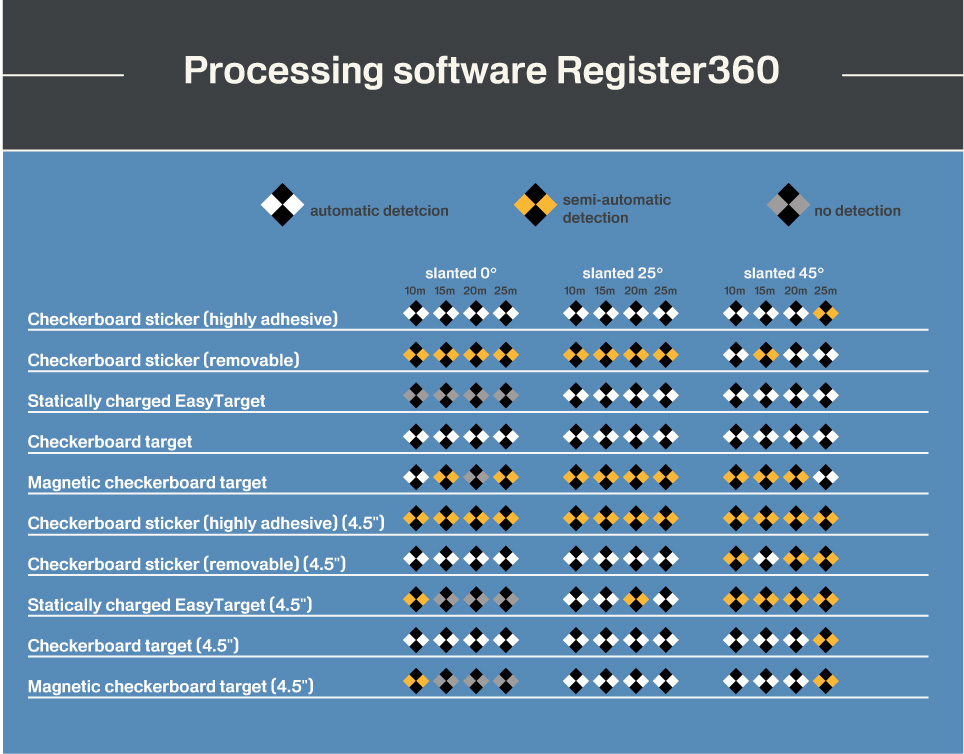
When looking at the results, the unrecognizability of some of the targets in a frontal constellation is striking (0° | normal of the checkerboard target points towards the scanner). These result from problems with the surface condition, which will be explained in the following. Better results are achieved with square targets than with round ones, not least because of the larger surface and the resulting higher number of scan points. With a slight inclination, the best results of the test series are even shown up to distances of 25m for most targets.
Processing software Cyclone
The following results were obtained in Leica Cyclone:

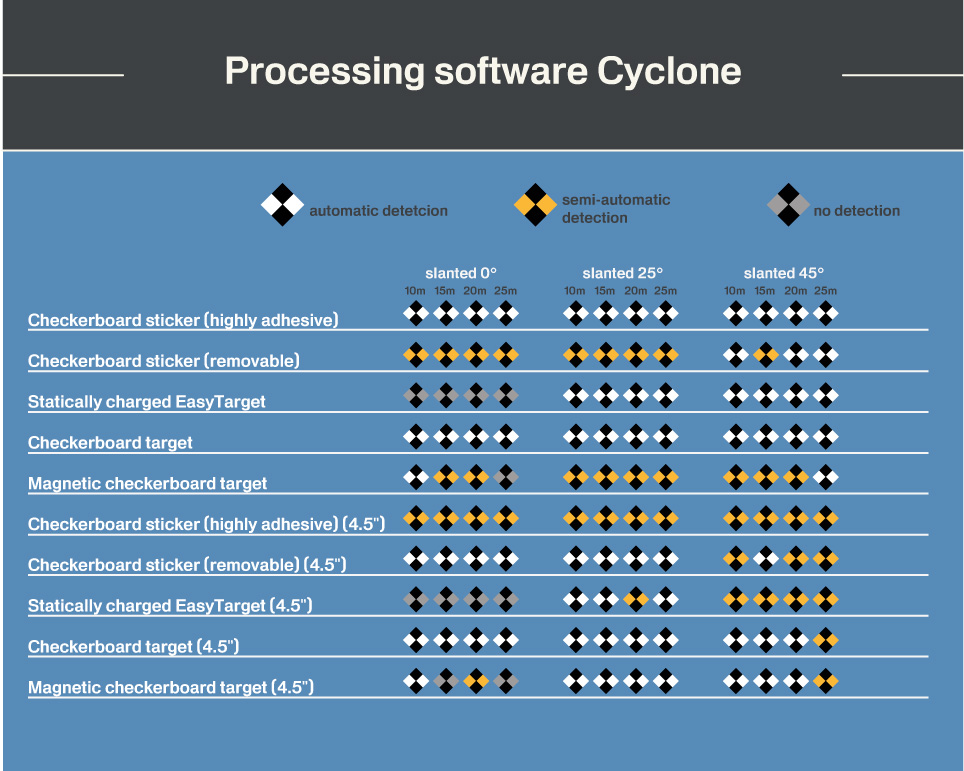
The test results in Leica Cyclone are very similar to the results in Register360. It can be concluded that a similar search algorithm is used for the two related software solutions.
Processing software PointCab
In the manufacturer independent software PointCab, the results look as follows:
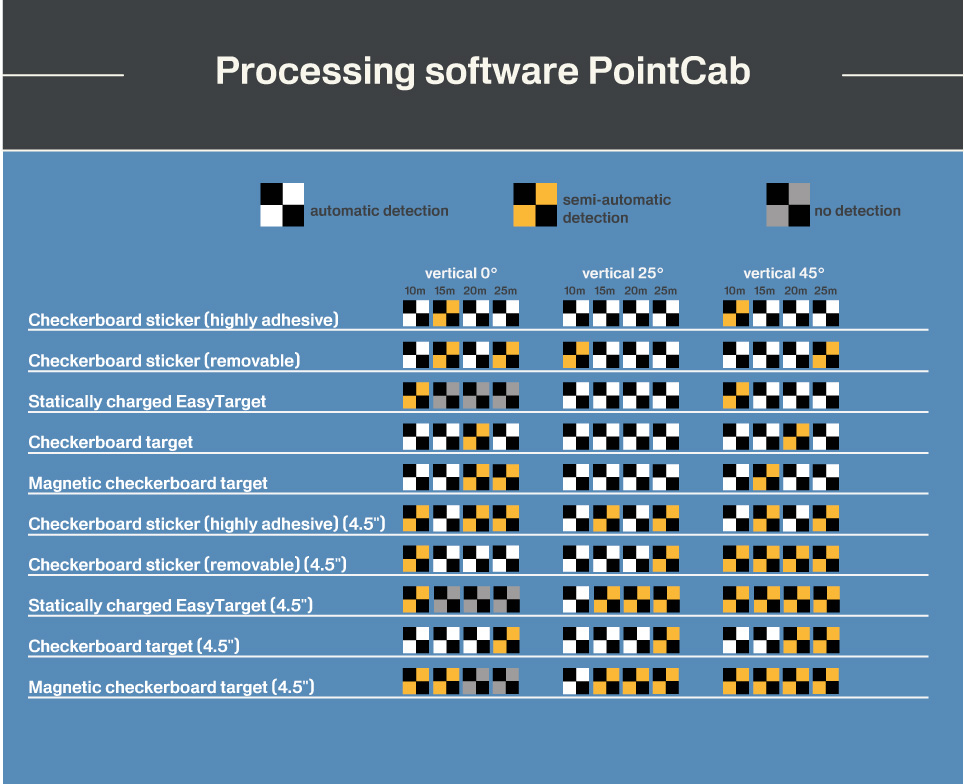
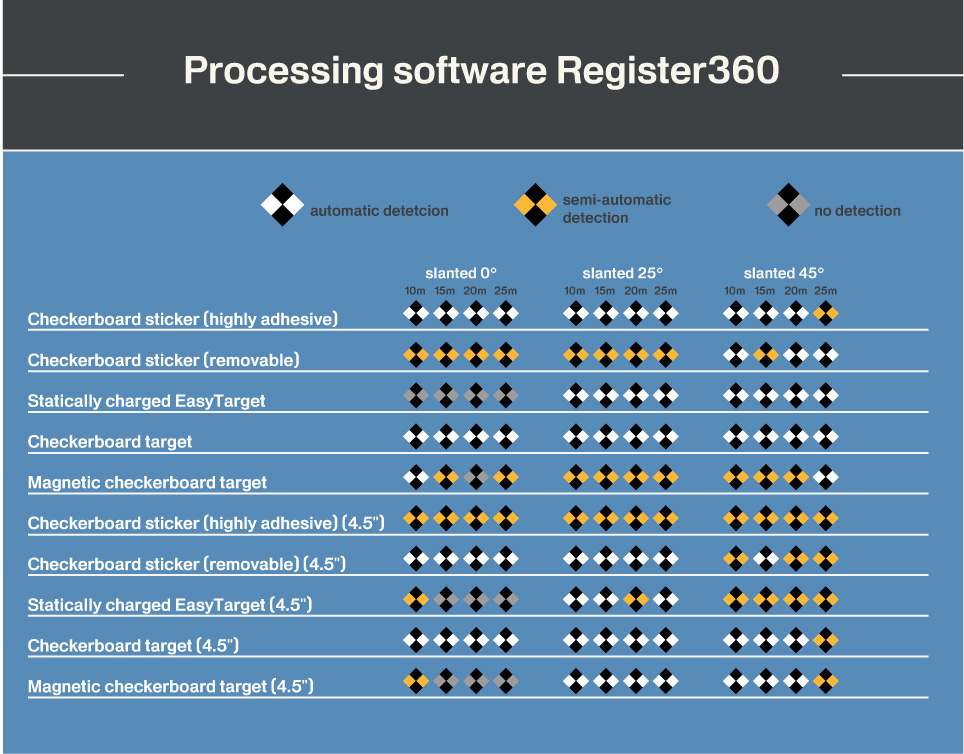
These results also partly resemble the previous ones. In some cases, PointCab detected chekcerboard targets that were previously unrecognizable. On the other hand, the recognition of previously well recognized targets is less reliable than with the Leica software.
Analysis in the software solutions
In 25m, with a frontal constellation, still about 400 points were measured on the square targets and about 150 points on the round targets. This number of points decreases with increasing inclination, so that slightly worse results are assumed with 45° inclination. This result is slightly reflected in the figures. Especially in the scan panoramas, it can finally be seen that the construction of the target center becomes less precise with increasing inclination. As the laser beams impinge on an inclined plane, the point distances increase and the construction accuracy decreases.
Thus, it can be assumed that the best results are achieved with a frontal constellation (0°). Reality shows that this is highly dependent on the nature of the target surface. As soon as the surface of the target is too shiny and at the same time the target is directed too frontally to the scanner, reflection effects occur which make the checkerboard targets unrecognizable (see image).
This is an annoying phenomenon, especially if it is only discovered during the analysis in the office.
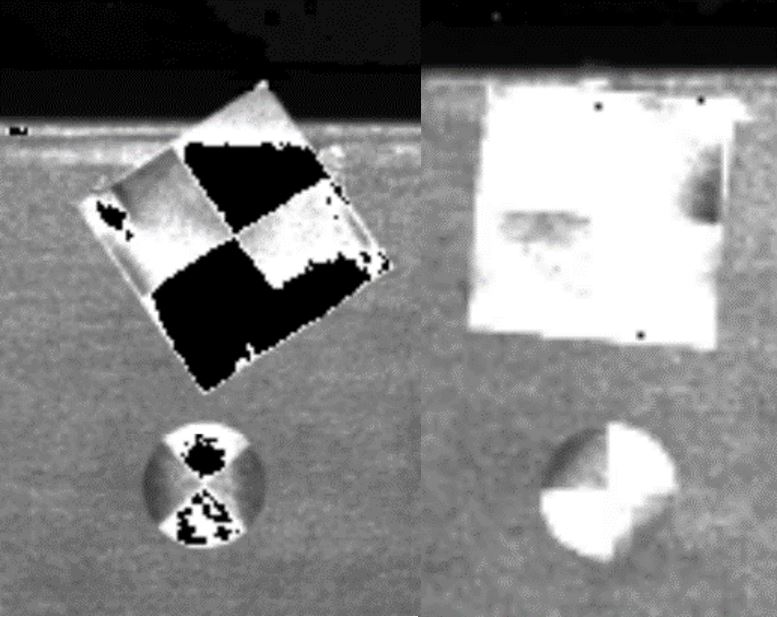
Conclusion - Checkerboard detection with Leica RTC360
All in all, we can say that Laserscanning Europe's targets can be used with the Leica RTC360. Especially due to the surface size of the square targets it can be concluded that they are better recognizable than the smaller round targets.
After this test with the RTC360 and also based on further experience with FARO scanners, we will remove EasyTargets from our range of products for the time being. The surface is not sufficient to guarantee reliable results.
The phenomenon of blooming effects cannot be avoided during scanning. This can often lead to unrecognizability even with good surface quality. Therefore, a certain care during the scanning process is important. Avoid scanner positions that face the target at a right angle. If possible, select a slightly slanting scan position with respect to the target. It is also possible to place the targets higher or lower than the scanner itself. This is another way to avoid "blooming" the target.
> Find checkerboard targets in the online shop
Are you looking for laser scanning accessories? – Visit our online shop!
All accessories mentioned in this case study can be easily purchased in our well-assorted online shop.